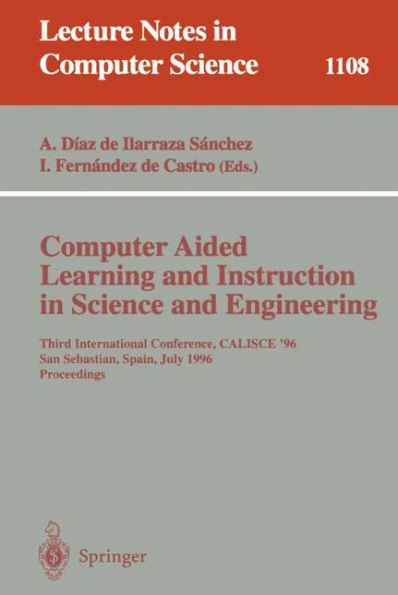5
1
9783540614913


Computer Aided Learning and Instruction in Science and Engineering: Third International Conference, CALISCE'96, San Sebastian, Spain, July 29 - 31, 1996, Proceedings / Edition 1 available in Paperback

Computer Aided Learning and Instruction in Science and Engineering: Third International Conference, CALISCE'96, San Sebastian, Spain, July 29 - 31, 1996, Proceedings / Edition 1
- ISBN-10:
- 3540614915
- ISBN-13:
- 9783540614913
- Pub. Date:
- 08/16/1996
- Publisher:
- Springer Berlin Heidelberg
- ISBN-10:
- 3540614915
- ISBN-13:
- 9783540614913
- Pub. Date:
- 08/16/1996
- Publisher:
- Springer Berlin Heidelberg
54.99
In Stock

Product Details
| ISBN-13: | 9783540614913 |
|---|---|
| Publisher: | Springer Berlin Heidelberg |
| Publication date: | 08/16/1996 |
| Series: | Lecture Notes in Computer Science , #1108 |
| Edition description: | 1996 |
| Pages: | 485 |
| Product dimensions: | 6.10(w) x 9.25(h) x 0.04(d) |
From the B&N Reads Blog
